Table of Contents
Intro
So you want a good barbell, but you’re conflicted as to what type to get.
The two main types of bars are power bars (also called powerlifting bars) and olympic weightlifting bars. Weightlifting bars might also be called olympic bars, or “oly bars” for short. Just to confuse things, “olympic bar” might mean anything. When someone says it, maybe they mean a weightlifting bar, or maybe they mean any bar with 2″ diameter rotating sleeves that will take olympic weights. Who knows. It depends on the context.
FYI: “barbell” and “bar” usually mean the exact same thing. Back in the ancient days, when you had only fixed-weight barbells with those round heads, they were barbells. Then came the adjustable ones, composed of the weights and the bar. So the bar sort of becomes a barbell when it’s loaded with weight, but really it’s often called a barbell whether it’s loaded or not. A barbell, after all, is more than just a steel bar shaft straight from the steel mill. It’s got shoulders, sleeves, bushings, knurling, etc.
In this post we’ll call them “power bars” and “weightlifting bars,” just to be consistent on this page anyway.
Your best choice depends on the exercises it will be used for, and in what kind of environment.
Let’s look at them in more detail…
Power Bars
Power Bars are meant for the “big 3” powerlifting lifts: back squat, bench press and deadlift. These lifts are what powerlifting competitions are all about. But over the years they have also been embraced as good lifts for pretty much anyone to do, over a wide range of goals and training styles, so power bars are what you’ll see at commercial gyms and lots of other places.
There are also extra-long deadlift bars that are another special type of bar.
Power bars, or powerlifting bars, feature:
- Stiff Steel to faciliate slow, controlled movements with minimal whip action
- Center Knurling to keep friction on your back for squats
- Aggressive/Deep Knurling for a no-slip grip
- 810mm Spaced Ring Markings
- Thicker 29mm-32mm Shaft to be more comfortable for bench presses and squats
- Steel or Brass Bushings to allow some spin
- High Tensile Strength (180,000+ PSI) to withstand being slammed on a rack
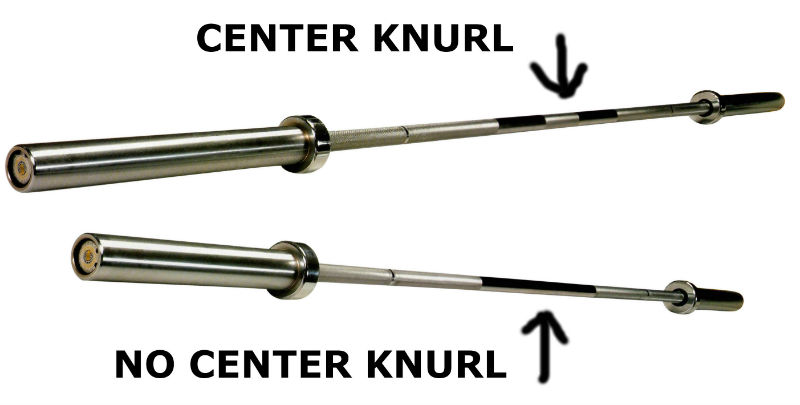
Accordingly, when you use a power bar for weightlifting movements, you will run into these issues:
- The stiff steel doesn’t give you the kind of spring you want when exploding off the floor.
- The center knurling can scratch your neck when catching a clean.
- The aggressive knurling will tear up your hands for the typical high reps in weightlifting, although with heavy max attempts the aggressive knurling will help.
- The ring markings won’t be in the spot you’re used to to judge your best hand placement.
- The thicker shaft will be harder to hold onto when pulling off the floor.
- The bushings won’t facilitate as good a spin for your transition from the pull to the catch.
Weightlifting Bars
Weightlifting Bars used to be seen mainly in specialized olympic lifting gyms. No longer! When Crossfit got big, manufacturers started producing more of these for all the athletes who started learning that olympic lifts were the way to go. The olympic lifts are the snatch and the clean-and-jerk, both lifts ending with the bar held overhead. You’ve seen those lifts performed at the Olympic Games.
These bars have:
- More Flexible Steel to facilitate the whip desired for heavy cleans
- No Center Knurling so it doesn’t scratch the front of your neck during cleans.
- Soft or Medium Knurling on training bars so the bar can slide in your transition from the pull to the catch. However, competition level weightlifting bars have more aggressive knurling to help you complete that single rep and kick everyone’s ass.
- 910mm Spaced Ring Markings
- Thinner 28mm-28.5mm Shaft for a good pulling grip (or 25mm for women’s bars)
- Roller Bearings on the high-end bars for sensitive spin so you can transition your wrists to catch it in rack position on your shoulders.
When you use a weightlifting bar for powerlifting movements, you will run into these issues:
- A heavily loaded bar will wobble more than you would like when you bounce out of the hole in a squat. Under about 300 lbs this isn’t much of an issue.
- The bar won’t stay on your back as easily for back squats without center knurling.
- You can lose your grip when deadlifting with bars with soft knurling on weightlifting training bars.
- The ring markings won’t be the spots you’re used to for your best hand placement.
- A 28mm shaft isn’t as good for pushing movements, the way it will get dig into your hands or back more than a 29mm or larger shaft. This normally isn’t a big issue but can make a difference in max attempts.
- The bearings will cause the shaft to rotate more easily than you may like for presses.
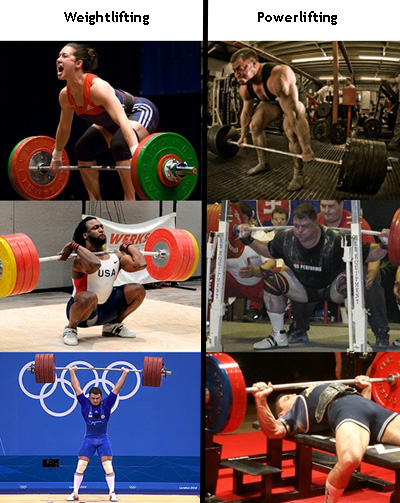
Power bars are used for the deadlift, squat, and bench press.
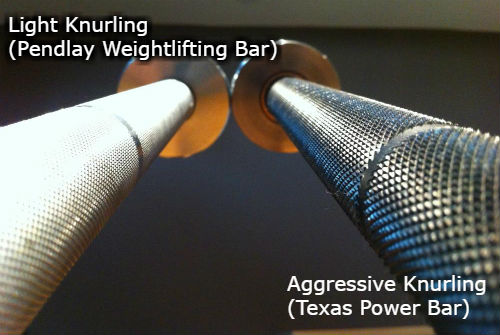
Knurling is the textured X-pattern pressed into the bar shaft. It gives you a better grip. All bars have knurling over most of the shaft.
Why don’t they just knurl the whole thing? A few reasons. The smooth spots in the middle give you good guides to center your hands from. Lifters doing cleans often prefer no center knurling so they won’t scratch the front of their neck up. Being conservative with the knurling keeps the knurling tool from wearing out so quickly and jacking up costs. All bars have a smooth section in the middle, with or without an ~8″ strip of knurling in the very center of that, which is what we call center knurling.
The ring spacing has to do with the IWF and IPF certification differences. For snatches the grip is pretty wide, so the wider markings helps. The IPF rules actually limit the grip width according to the 810mm spacing.
York makes both weightlifting and power bars, but they all have center knurling because the IWF certification actually requires it even though it serves no purpose in olympic lifts anymore. Back in the day, when the one-handed snatch was a competition lift, you needed center knurling. That’s a pretty rare lift to be doing anymore with a barbell.
All Purpose Bars
All purpose, or bybrid bars, combine some elements of both, because you know what, sometimes you want to do cleans and sometimes you want to do back squats or deadlifts. These are hard to define, because so many bars now are made to overlap in some way or another.
The knurling on these will be somewhere in the moderate range.
The tensile strength will be somewhere in the range of a moderate 150,000 PSI to a high 200,000 PSI or even higher.
Some bars have the power bar ring spacing and aggressive knurling, but the shaft thickness and no center knurling makes them also like weightlifting bars. So what do you call them? It doesn’t matter. Manufacturers have come up with all variations of these elements with the idea that there’s a market for it.
Economy Bars
Economy bars are the cheap imitations. They try to be like their big brothers, and they look a lot like them, but they can’t carry as much weight. They’re made cheaply and aren’t as nice to use.
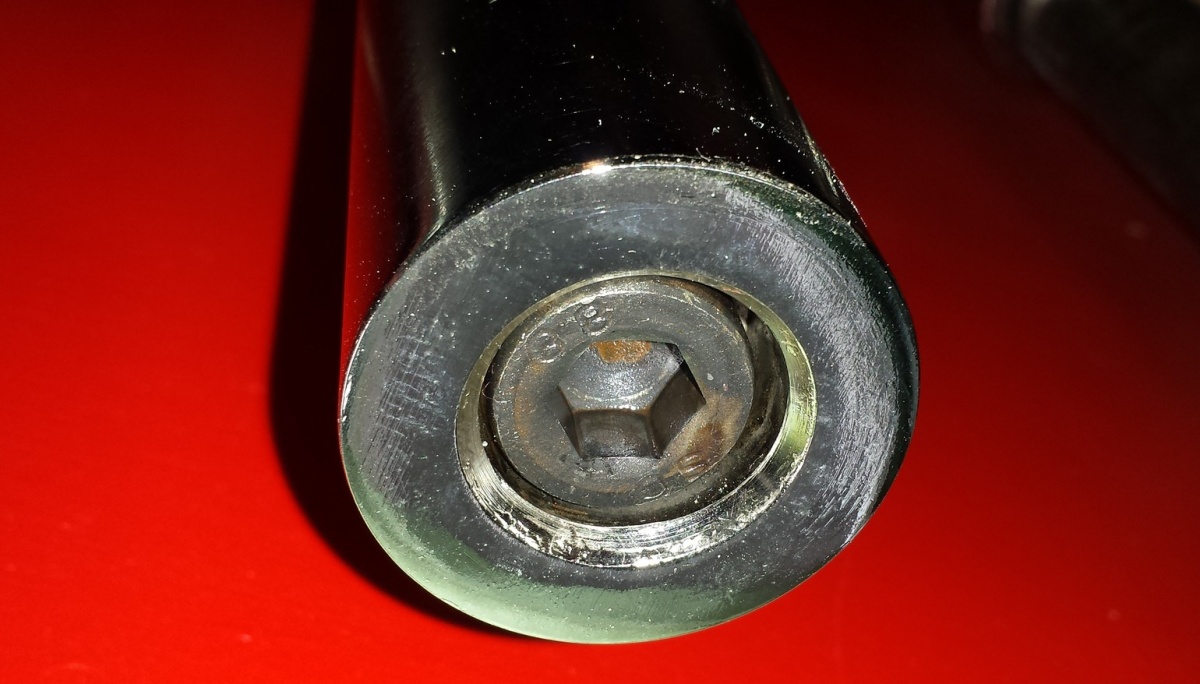
You can identify economy bars by the hex bolt going into the end, as shown here. This is the worst way to secure the sleeves onto the bar out of all the ways.
The Top All-Purpose Picks
So you’re still conflicted over which type of bar to get. I understand!
Here are my recommendations for bars that will work well for all-around use in a home gym for strength training or whatever you want to do. Use them for cleans, squats, presses, anything you want.
See them here: The Best All-Purpose Bars, and if that’s too pricey for you, The Best Olympic Bar Under $200.
Not Satisfied? Pick the Right Power Bar or Weightlifting Bar
Do you want to avoid hybrid bars and their tradeoffs? Do you want to get more than one bar? Does your routine have exclusively powerlifting or weightlifting style exercises?
If so, you want to know what the best power bar or weightlifting bar is.
Here’s what you want. Check out these articles for handy charts that compare your options:

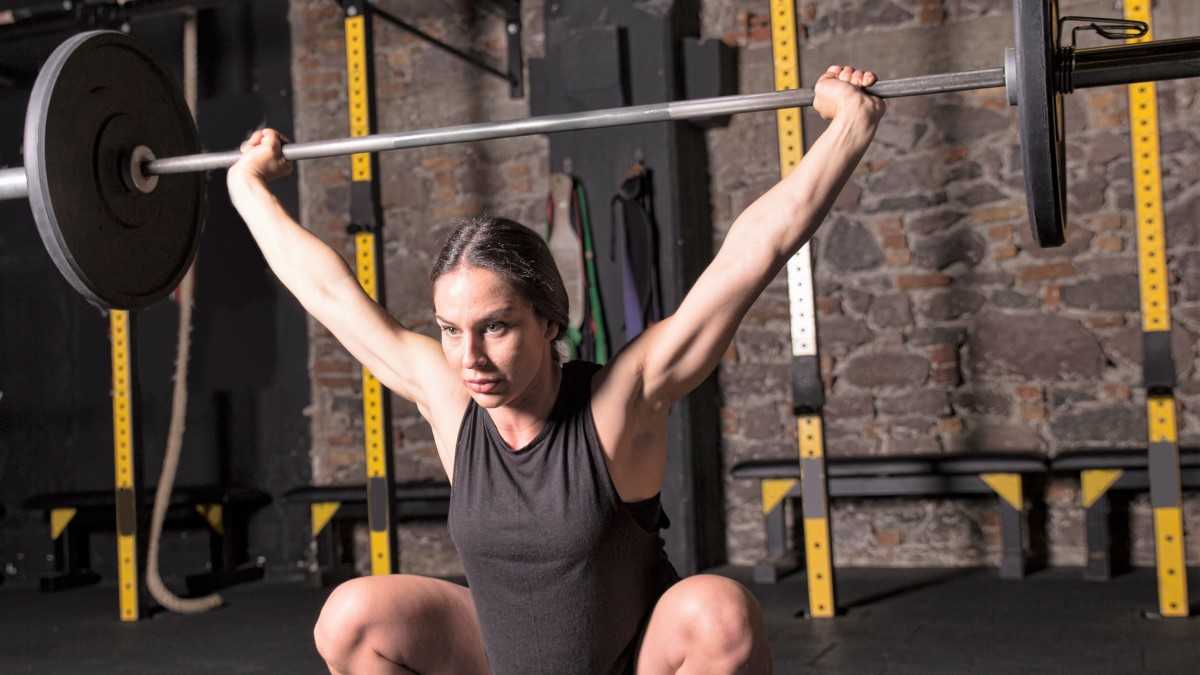
Great article!
“Roller bearings” is the same as “needle bearings”, am I right?
Also, I find the following bit interesting:
“Soft or Medium Knurling on training bars so the bar can slide in your transition from the pull to the catch. However, competition level weightlifting bars have more aggressive knurling to help you complete that single rep and kick everyone’s ass.”
How can that more aggressive knurl on competition level weightlifting bars help you complete that single rep if aggressive knurl is regarded as an impediment to the transition from the pull to the catch? It’s like a refutation of what the softer knurl stands for.
Yeah, roller bearings = needle bearings.
If you’re losing your pull grip because the knurling is too soft, you won’t get the bar high enough for any of that to matter.